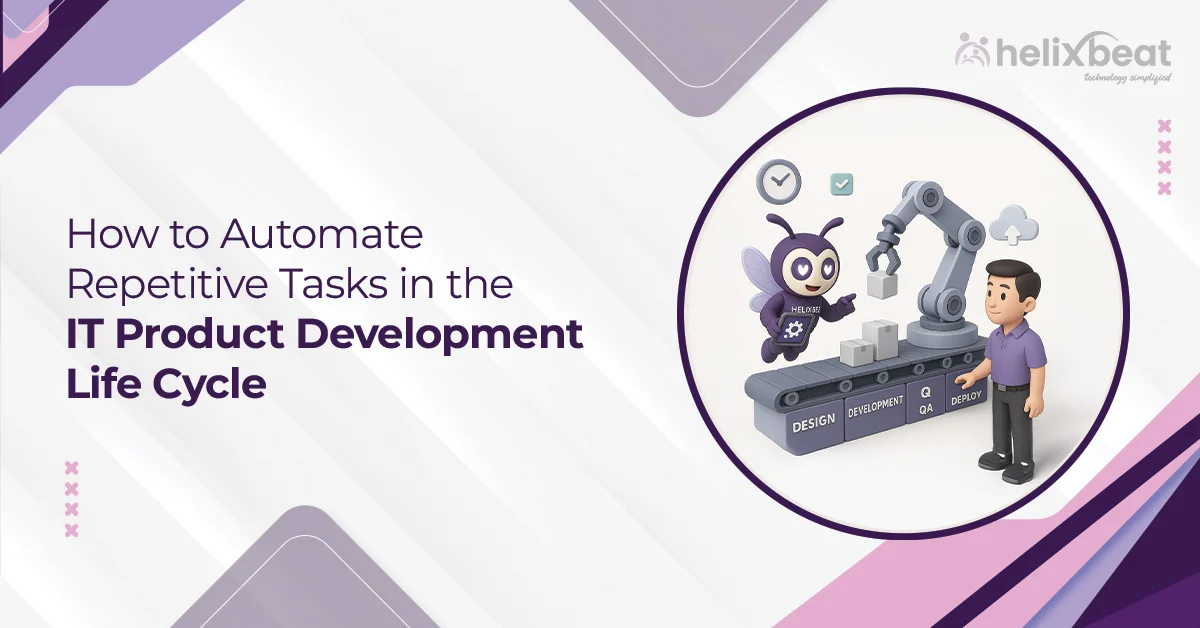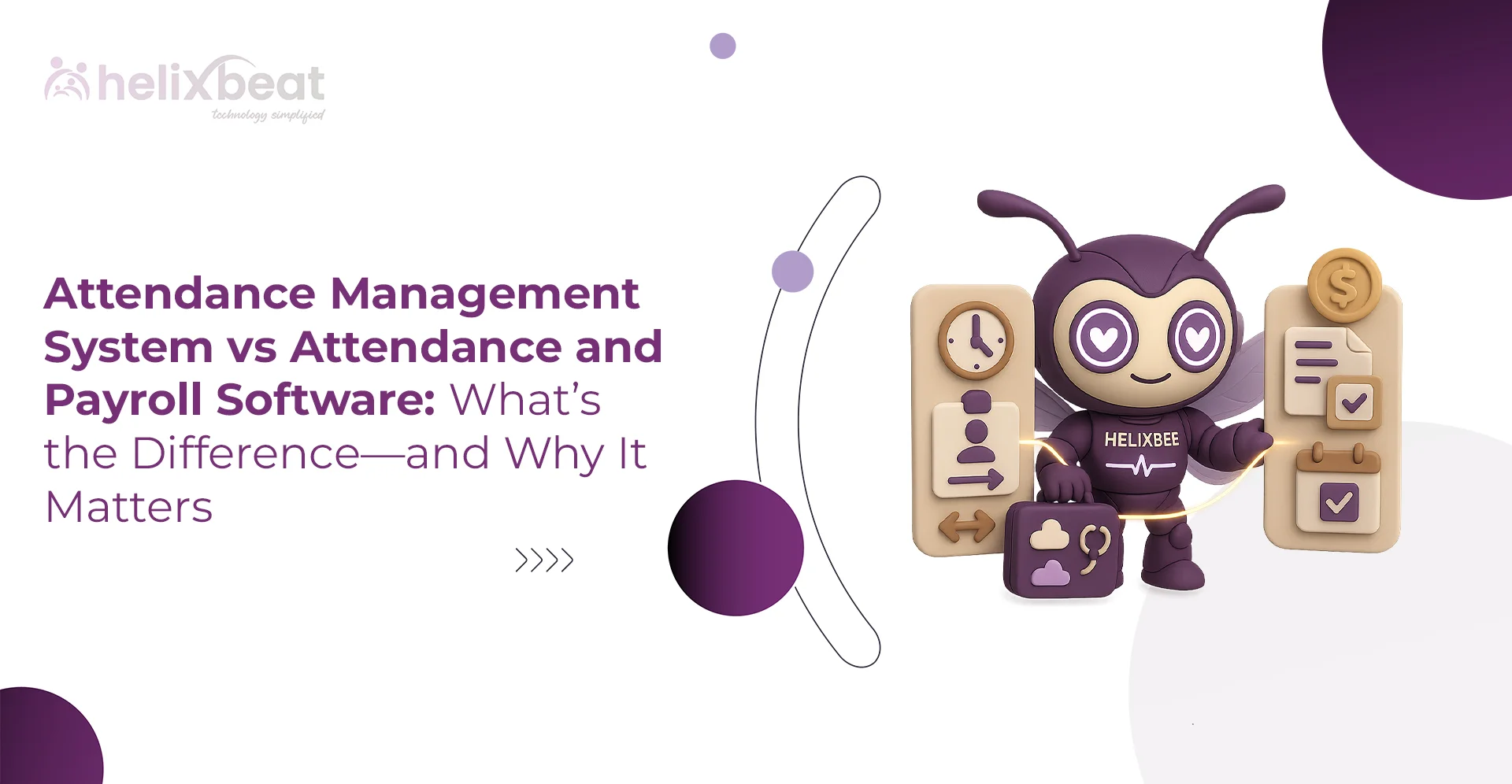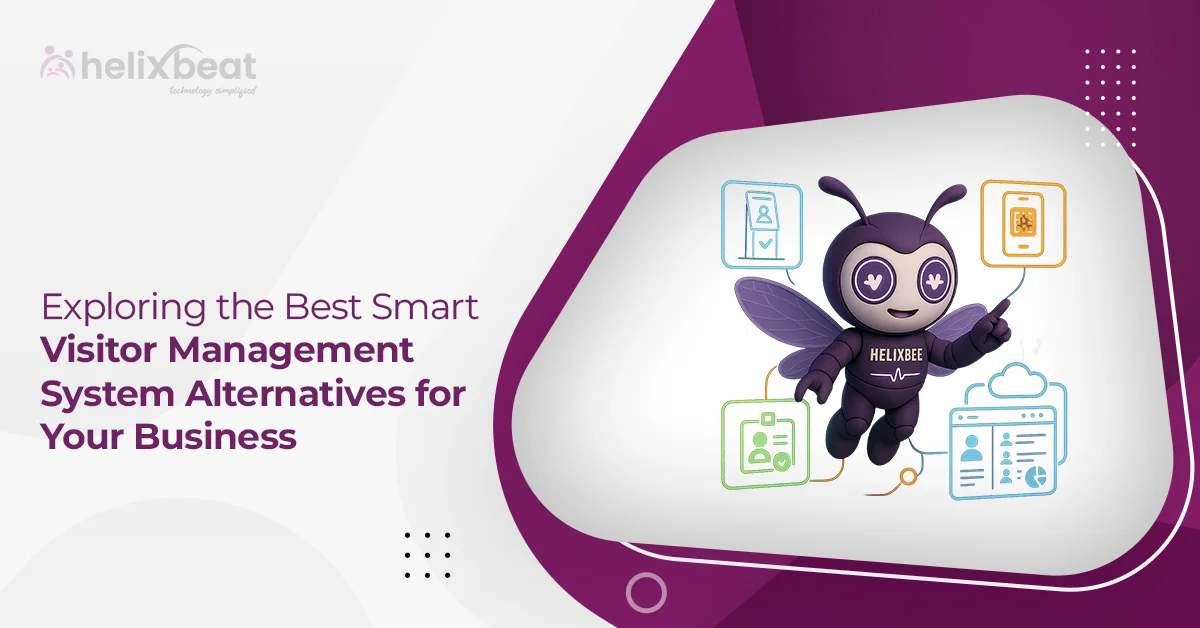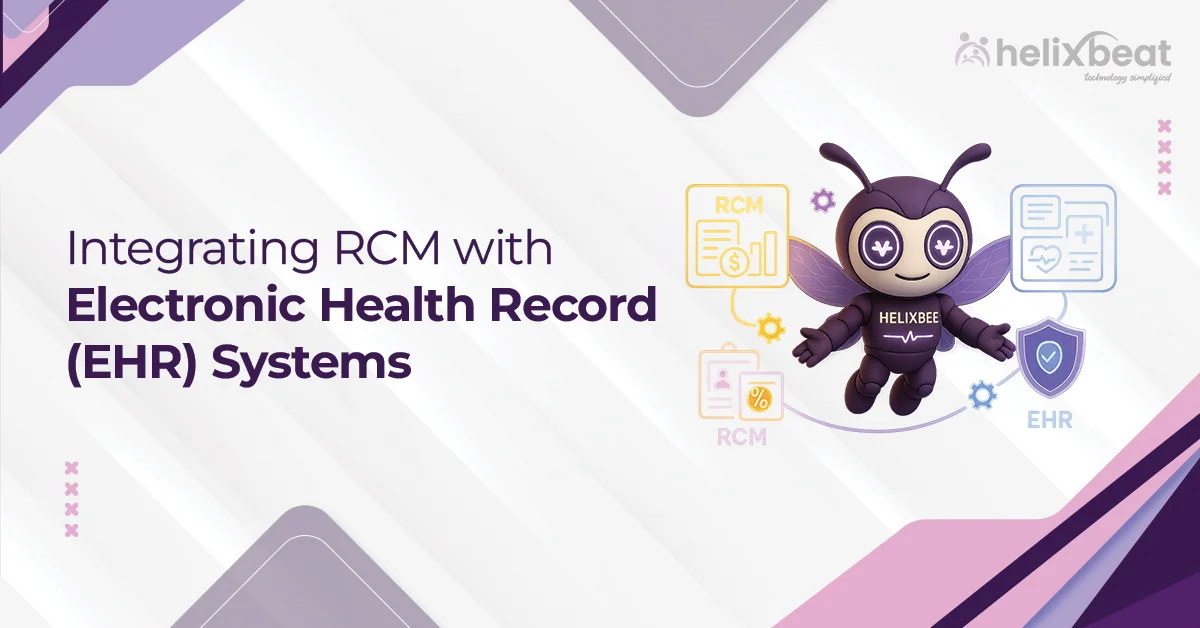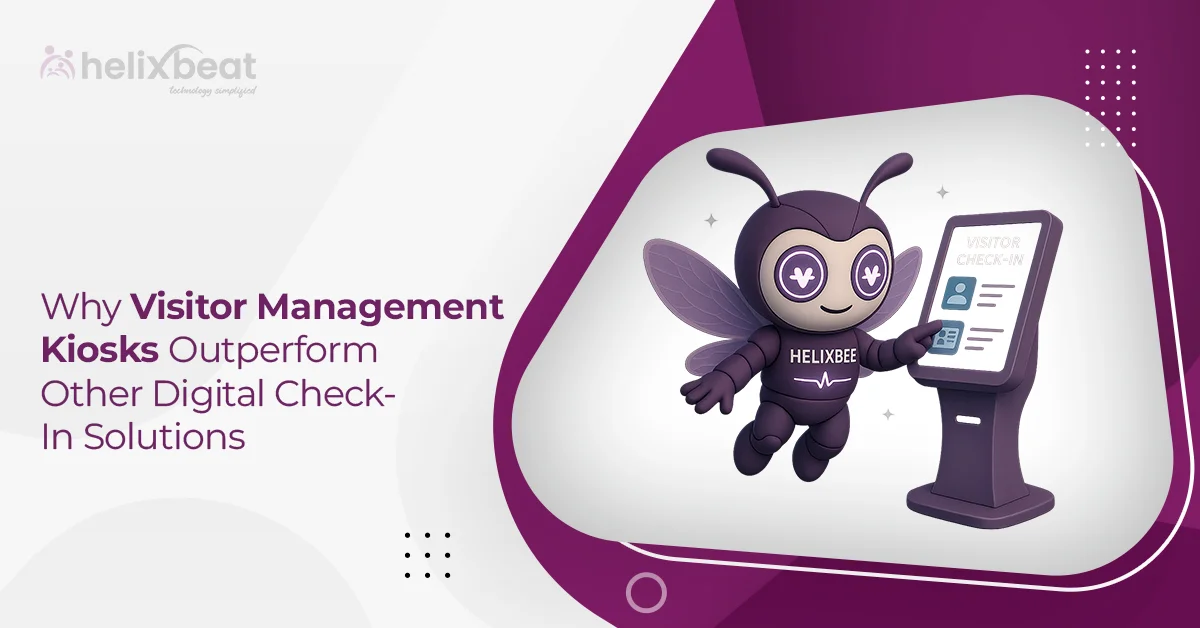Nowadays, entrepreneurs and companies are always looking for ways to improve efficiency and stay competitive. Studies show that 70% of IT product development teams say that repetitive tasks cause the most delays in their processes. Tasks like manual testing, code integration, and deployment take up a lot of time and leads to mistakes.
For business owners, getting products to market quickly and with high quality is important. Automating these repetitive tasks in the IT product development life cycle can help solve these problems. By automating parts of the process, businesses can save time, reduce errors, and deliver better products faster.
This shift to automation helps teams focus on more important work, drives innovation, and ultimately improves a company’s success. Here, you can how to automate repetitive tasks in the IT product development life cycle.

Table of Contents
Evolution of IT Product Development Life Cycle
The IT product development life cycle has changed a lot over the years to keep up with the need for faster and higher-quality products. In the past, the process followed a step-by-step approach, where each phase was completed before moving on to the next. But as technology improved and customer needs changed, businesses started using more flexible methods, like agile, which allowed for quicker development and better feedback.
Today, tools like DevOps lifecycle automation and CI/CD pipelines help speed up the process by automating tasks such as testing and deployment. This makes development more efficient, reducing errors and allowing businesses to deliver products faster.
Why You Should Automate Repetitive Tasks in Product Development
Automating repetitive tasks in product development is essential for improving efficiency, reducing human error, and accelerating time-to-market. By automating processes such as testing, code deployment, documentation, and issue tracking, development teams can focus on more strategic and value-driven activities, like innovation and problem-solving.
Automation also ensures consistency across tasks, improves collaboration, and enhances the overall quality of the product. Additionally, it helps in scaling development efforts, especially in larger teams or fast-paced environments, making it easier to meet deadlines and maintain a competitive edge in the market. Ultimately, automation leads to cost savings, better resource utilization, and more reliable product delivery.
How to Automate Repetitive Tasks in the IT Product Development Life Cycle
Automating repetitive tasks in the IT product development life cycle is crucial for improving efficiency, reducing human error, and accelerating time-to-market. Here’s a step-by-step guide on how to automate these tasks, using examples for easy understanding:
1. Identify Repetitive Tasks
What to Do: The first step in automation is to identify which tasks in the IT product development life cycle are repetitive and time-consuming. These tasks may include code deployment, testing, and documentation generation.
Understand with example: In a software development project, repetitive tasks could include running unit tests, deploying code to development environments, or generating release notes after each sprint.
2. Choose the Right Automation Tools
What to Do: Once you’ve identified the repetitive tasks, the next step is selecting the appropriate tools for automation. Tools like Jenkins, GitLab CI, or CircleCI are commonly used to automate tasks in the development life cycle.
Understand with example: If you’re automating testing, tools like Selenium or JUnit can be used to automatically execute test cases every time new code is committed to the repository.
3. Set Up Continuous Integration (CI) and Continuous Delivery (CD) Pipelines
What to Do: Setting up CI/CD pipelines helps in automating code integration and delivery. Continuous Integration ensures that code changes are automatically tested and integrated, while Continuous Delivery automates the deployment process.
Understand with example: Whenever a developer commits new code to the repository, the CI pipeline triggers the testing process, checks for code quality, and automatically deploys it to a staging environment, without human intervention.
4. Automate Documentation Generation
What to Do: Documentation is often neglected but is vital for maintaining clear communication and tracking project progress. Automating the generation of documentation, such as release notes or API documentation, saves time and ensures consistency.
Understand with example: Tools like Swagger or Javadoc can automatically generate API documentation from code annotations, while a tool like Doxygen can create documentation for system architecture and design.
5. Implement Version Control and Automatic Merging
What to Do: Automating version control helps track changes and integrates multiple developers’ work efficiently. Implementing automatic merging reduces the manual effort required to handle conflicts.
Understand with example: Using version control systems like Git, developers can set up automatic merging of feature branches into the main branch, ensuring that no manual intervention is needed when new features are added.
6. Automate Issue Tracking and Bug Management
What to Do: Integrating issue tracking tools like Jira with CI/CD pipelines allows for automatic tracking of bugs and issues. When code is deployed or tested, relevant issues can be automatically linked to the build or release, providing real-time visibility.
Understand with example: If a developer commits a change related to a bug, the CI system can automatically associate that commit with the corresponding issue in Jira, keeping everything up-to-date.
7. Automate Code Reviews with Tools
What to Do: Automating the code review process helps in maintaining code quality without manual intervention. Tools like SonarQube, CodeClimate, or Codacy automatically check for code quality, security vulnerabilities, and coding standards.
Understand with example: Before merging any new code into the main branch, SonarQube can automatically scan the code for vulnerabilities and ensure that it meets predefined coding standards.
8. Automate Reporting and Metrics Tracking
What to Do: It’s important to track key performance metrics like build success rates, deployment frequencies, and test pass rates. Automating these reports can save time and provide insight into the health of the product development process.
Understand with example: Tools like Grafana or Power BI can be integrated with your CI/CD pipelines to automatically generate reports on deployment trends, code quality, and testing outcomes, which can be reviewed by project managers in real time.
9. Integrate Monitoring and Alerts for Automated Systems
What to Do: Once automation is in place, it’s crucial to monitor the automated processes to detect issues or failures early. Setting up automated alerts ensures that any issues are flagged instantly and addressed before they affect the product development process.
Understand with example: If a deployment fails, Jenkins can automatically trigger an alert via email or Slack, notifying the development team of the failure. This allows the team to resolve the issue promptly without waiting for manual checks.
10. Review and Refine Automation Processes
What to Do: After implementing automation, continuous evaluation is necessary to refine and improve the process. Automating the wrong tasks can lead to inefficiencies, so it’s important to review the automation setup regularly.
Understand with example: You might find that some tests are being run too often, or some documentation generation tasks can be optimized to save resources. By continually reviewing and adjusting the automation scripts, you can ensure maximum efficiency.
AI in IT Product Development Life Cycle
AI is playing a transformative role in the IT product development life cycle by automating various tasks and enhancing efficiency. Here’s how AI is making an impact:
- Automated Testing and Bug Detection: AI-powered tools can automatically run tests on software, identify bugs, and suggest fixes, reducing the time spent on manual testing and improving software quality.
- Predictive Analytics for Decision Making: Artificial intelligence can analyze past data to predict trends, user behaviors, and product performance, helping teams make more informed decisions during the product development process.
- Enhanced Code Review and Optimization: AI tools can automatically review code for errors, inefficiencies, and security vulnerabilities, ensuring higher quality and more optimized code before deployment.
- Continuous Integration and Delivery (CI/CD) Automation: AI integrates seamlessly with CI/CD pipelines to automate code integration, testing, and deployment, ensuring faster releases and smoother workflows.
Top Automation Tools for Product Development
In the IT product development life cycle, automation plays a crucial role in streamlining processes, reducing manual effort, and enhancing overall productivity. Here are the top 5 automation tools for product development:
- Jenkins: An open-source automation server used for continuous integration and delivery, enabling automated building, testing, and deployment.
- GitLab CI: A robust CI/CD tool that integrates with GitLab repositories to automate code testing, building, and deployment processes.
- Selenium: A powerful framework for automating web application testing, supporting multiple browsers and programming languages.
- CircleCI: A cloud-based CI/CD tool that automates testing, building, and deploying code with scalable pipelines for faster development cycles.
- Docker: A platform that automates the deployment of applications within lightweight, portable containers, simplifying environment setup and scaling.
Upgrade Your IT Product Development with Helixbeat
At Helixbeat, we make your IT product development faster and more efficient by automating key tasks. Our team uses the best tools to automate testing, deployment, and documentation, so your team can focus on creating new ideas.
With our product development services, we help you reduce time-to-market and improve product quality. Let us help you streamline your development process and deliver better products. Contact us today to learn how we can support your product development journey.
FAQ:
1. What is IT Product Development Life Cycle?
The IT Product Development Life Cycle is the process of planning, designing, developing, testing, and deploying an IT product, ensuring it meets business and customer needs.
2. What are the best ways to automate the product development process in a tech team?
Use tools like CI/CD pipelines, automated testing frameworks, version control systems, and code review tools to automate repetitive tasks, improve efficiency, and reduce errors.
3. Short note on DevOps lifecycle automation
DevOps lifecycle automation integrates development and IT operations to automate code deployment, testing, and monitoring, resulting in faster releases and more reliable software.
4. Difference between PDLC and SDLC?
PDLC covers the entire product creation process, including ideation and post-launch, while SDLC focuses specifically on the software development stages like planning, coding, and testing.
5. What are the 5 major stages of product development?
- Idea Generation
- Concept Development
- Design and Development
- Testing
- Launch



